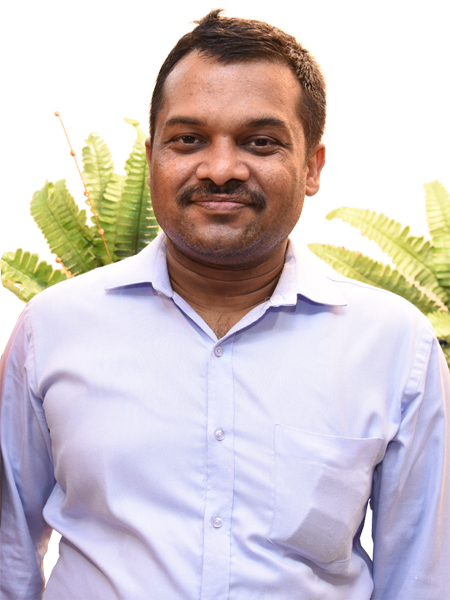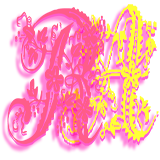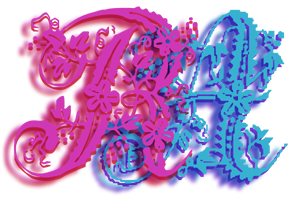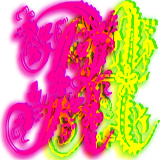Time-Sharing, Personal Computer and RTOS
Just like any other system, operating systems also have evolved over a period of time, starting from the very primitive systems to the present-day complex and versatile ones.
Learning Objectives
At the end of this topic, you will be able to:
- Describe Time-sharing operating systems, Personal Computer operating systems, and Real-time operating systems.
- Identify the role of these types of operating systems.
- Explain the work mechanism of operating systems.
Types of Operating System
1. Time-sharing operating systems
2. Personal Computer operating systems
3. Real-time operating systems
Time-sharing Operating Systems
Time-sharing multi tasking is a logical extension of multi-programming.
It provides an interactive use of the system.
A process executes for one time slice at a time.
A process may need more than one time slice to complete.
The CPU switches between processes at the end of a time slice.
Time-sharing Operating Systems are more complex than multi-programmed operating systems.
Job may have to be swapped in and out of main memory to the secondary memory.
Multi-programming and time-sharing are the main concepts in all modern operating systems.
Personal Computer Operating Systems
The main mode of use of a Personal Computer is by a single user.
Operating Systems for Personal Computers were designed as a single-user single task operating system.
It is assumed that only one user uses the machine and runs only one program at a time.
The operating system of PCs consists of two parts:
a) BIOS (Basic Input Output System) which (bootable program) are stored in a ROM (Read Only Memory).
b) DOS (Disk Operating System) is stored in a floppy disk (in old days) or a hard disk (SATA HardDrive or Solid State HardDrive).
The major services provided by DOS are:
i) File management which allows user to create, edit, read, write and delete files (using Command Prompt CMD: dir, copy, del).
ii) Directory management which allows creation, change, search and deletion of directories (for example: md, cd, rm).
iii) Memory management which allows allocation and de-allocation of memory.
iv) Command interpreter which interprets commands issued by the user and executes DOS functions
v) Executive functions which provides programs to load and execute user programs, retrieve error codes, correct and return programs.
Real-time Operating Systems
Respond to events that happen in real time.
Processing must be done within the defined constraints.
This feature is very useful in implementing systems such as an airline reservation system.
There are two flavours of real-time systems:
1) Hard Real-time System: It guarantees that critical tasks complete at a specified time.
2) Soft Real-time System: A critical real time task gets priority over other tasks.
Summary
In this topic, you learnt:
- CPU scheduling and multi-programming provide each user one time slice (slot) in a time-shared system.
- A process executes for one time slice at a time.
- Personal Computer System: The OS of a PCs consists of two parts.
(a) One part is called the BIOS which are stored in a ROM (Read Only Memory).
(b) The other part is called the DOS which is stored in a floppy disk or a hard disk.
OS_Unit 03: Transcript
Hello and welcome. We are going to discuss evolution of operating system, just like any other operating system, time theory, personal computer system, and realtime operating systems. Work with the specific feature these operating system made for the special. Uh, at the end of this topic, you'll be able to describe time sharing, operating system, personal computer, operating system, and realtime operating system. Identify the role of the operating system, explain the work mechanism of operating. Let's discuss the time sharing operating system, personal computer operating system, real time operating system. First, we are going to discuss time sharing operating system. So let's discuss the time sharing operating system. Time sharing. Multitasking is a logical extension of a multi-program. In a multi programming operating system, we learned that only, uh, CPU can use a single process at a time. If the process gonna input output, that time process processor can frame to the another process. But in a time sharing, multitasking, uh, operating system, it here will be the time slice. It means it is the logical extension of multi programming IT program. Provide the introductive use of the system. A process is execute for one time slice at a time. Suppose we have a multiple processes, uh, five process. That time there will be the time quantum for each process after the time quantum completion process jump further. Second process and, uh, after the second process time, uh, quantum completion, the processor jump on the card process and so on. After the completion of five process, uh, processor jump farther. First process this process going on till the processor, uh, uh, not complete a process may need more than one time slash two complete. Uh, suppose if a pro we have a time of two seconds and, uh, the processor process time is four seconds. Third time, the first process going for time, quantum up. Two, two, uh, up to one five. Process after the returning of first, uh, first scenario, 1, 2, 3, 4, 5. It comes from the first process and remaining, uh, time. Two seconds. It'll complete as time. The time quantum may be the 22 Time sharing operating system in a more point of time. Sharing operating system the CPU switches process at the end of the time slices 1, 2, 2, 1. Process to the end of the process and time quantum will be the same for all the process. The time sharing operating system are more complex than multi-program operating system because in a multi-program, operating system process when jump then uh, jump when process going further in waiting further input and output devices. So it is the like a non-print process, but in a time sharing it is the prim process means it can jump from one process to another process, uh, by the circumstance. Some circumstances like a time quantum, like a input and output it, the waiting, the process at time, it can also, so it is the PRI process. Job may have to sw in out and main memory to the secondary memory. Here is a mechanism of the swiping and swiping and swipe out. Suppose if there a process in a main memory and it's taking the too much memory is space in main memory. That time the process go to the main memory to the secondary memory and secondary memory to the main memory. When the process goes main memory to the secondary memory, it called the swipe in, swipe out, or when process comes from the secondary memory to main memory. This is called the SW. In process. Multi programming and time sharing are a main concept in all modern operating system. In a modern computer system, we are using the time sharing concept and this concept mainly visual in single processing, operating. Let's discuss the personal computer operating system. As you know, we are all using the pc. This PC is called the personal computer operating system. The main mode of the use PC via the single user. Single user. It is also called the pc because the single user using the single piece operating system for pc were designed as a single user, single task operating system. It's assumed that only one user uses the machine and run only one program at the time from the manufacturers. It assume that q we are using the pc. So only one user can go farther, only one program. So the manufacturing, uh, concept is a one process, uh, run in a one time. The operating system PC consists of the two parts. First is bios, basic input output, which are stored in a room read only memory. And second is the system read only memory. Here is just some, uh, basics programs like when we want to, uh, on the system, that type boot table programs store in a room and in our test operating system. When, uh, we want to, uh, run copy past that time, the some command to this coopering system. So we can say the operating system consist the two parts bios and the major services provider discing system. Those are file management, which allow user to create, create, read, write, and delete files. If you want to learn the tos, you can simply, uh, run on a run window as a toss, uh, CMD and enter. You will get in a tos prompt where you can apply the create eight read. And if you want to a directory of the file, simply you can run the DIR command when you want to the copy that time, you can use the copy commands directory management, which allow creation, change, search, and deletion of the directories. Here we can also create change search and delete the direct. If we want to make the directory. That time, we are using the MD commands. When we want to remove directory, then that time we are doing the R commands. So these are the basic commands for the source memory management, which allow, allow a location to location a location and location. Upper memory management. Memory management also allowed the allocation and location of memory. It means when the process want to run that time, uh, operating system, the, uh, space at a main memory. When the process is not running that time, it goes in a secondary memory and uh, it, uh, the space will be the yellow command interpreter and interpret command used by the user to execute, uh, the command prompt you can use. And here you can run a commands which commands you are using in a by the GY feature. Suppose in a operating system, you want to, uh, copy that time. You can, uh, use the GI features and uh, click them. Uh, right click in the mouse and copy the instances and test. Also you can test, but if you wanna do a copy and paste that time, you can also use the source to copy and test. Let's discuss the realtime operating system. Response to event that happened in a realtime processing must be done within a defined constant. These features is very useful. Implementing the system such as a airline reservation system, realtime operating system, basically work for the real time work environment like a reservation. Uh, when, uh, in a research, suppose in a when we are, they are making the supersonic missiles. That time they are using the realtime system. Mainly research areas is focus on the realtime operating system. These are these operating system, right, small operating system, but there is a time constraint to run a particular process. There are two flavors of a realtime operating system. First is a hard time, a realtime operating system, and second is just soft realtime operating in a hard realtime system. Uh, suppose that if you have given a two nanoseconds for a particular execution of a program, that time, if the, this process will take the two point some 2.2 nanosecond or a three nanosecond, that time the system will be stop the process in a stop real time system. The, if the process is going beyond the given time, it can exceed the time and it gives the message. Now you have exceed the time, but in a hard realtime system, it'll, it won't be exceed the time and it'll stop your process. So this is the basic difference between hard realtime system. In this topic, you learn CP scheduling and multi programming. Provide each user one time slice in a time shared system time, shared systems. Give us time quantum to each and every process. After the time quantum process move on to the another process, a process execute for one time slice atta time. After the time slice completion pro process, move forward to the another personal computer system divided in two parts. First part is called the bios basic input output system, which is stored in our home. And the other part is called the task. Disc Operating system is stored in a floppy disk or a hard in a bios. When we are start the system that time. During the booting, uh, operating systems, uh, installation commands run from the bios and it helps to the, uh, store the operating system from secondary memory to main memory. And other part does when we are going to operate the system, like doing the command, copy past directory, move the directory, make the directory, that time, uh, other part executed ds. Uh, this brings us to end of the topic. Please go through the reading materials, provide for more information. Thank.




